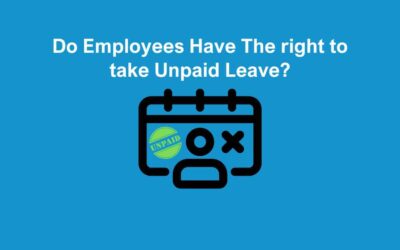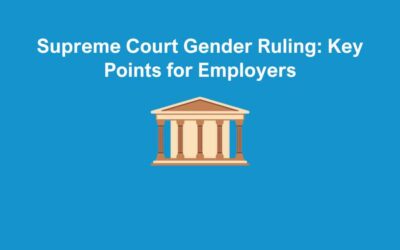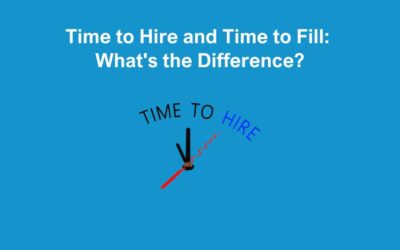An employee departure is an inevitable aspect of any organisation. Whether a team member leaves due to personal reasons, career advancement, or dissatisfaction, it’s crucial for leaders to understand the underlying factors that drive an employee exit departures. In this blog post, we will explore the importance of comprehending employee departures from a leadership perspective and delve into strategies that can help leaders address this issue effectively.
The Challenge of Employee Turnover
As business leaders and managers, we often face the challenge of employee turnover. It’s a natural part of the corporate landscape, but it invariably leads us to question the core of your leadership: your company culture, your management styles, and the work environment we’ve cultivated.
Employee turnover, a pervasive challenge across industries globally, encompasses the phenomenon of employees departing from an organization and requiring replacement through new hires. It is a critical metric for assessing workforce stability and organisational health. While a certain degree of turnover is natural and even beneficial for organisational renewal and the infusion of fresh perspectives, excessively high turnover rates can unleash a cascade of adverse effects on productivity, morale, and the financial bottom line of businesses.
In the contemporary dynamic and competitive business landscape, comprehending the intricate nuances of employee turnover is imperative for organizational leaders and managers. This introductory discourse seeks to delve into the multifaceted aspects of employee turnover, offering an in-depth exploration of its causes, consequences, and potential mitigation strategies.
Understanding Employee Turnover
Definition and Scope
Employee turnover encompasses the rate at which employees exit an organization, necessitating the recruitment and onboarding of new talent. It is a multifaceted metric influenced by various internal and external factors, reflecting the ebb and flow of personnel within an organization.
Types of Turnover
Employee turnover can be classified into voluntary and involuntary categories. Voluntary turnover occurs when employees choose to leave the organization of their own accord, while involuntary turnover involves employees leaving due to circumstances beyond their control, such as layoffs or terminations.
Causes of Employee Turnover
- Internal Factors: Internal factors contributing to employee turnover often stem from organisational shortcomings, such as ineffective leadership, poor management practices, inadequate career development opportunities, lack of recognition and rewards, and cultural misalignment.
- External Factors: External factors influencing employee turnover may include shifts in the job market, industry trends, economic conditions, and demographic changes. These external forces can impact job availability, employee mobility, and workforce demographics, influencing turnover rates within organisations.
The Misconception of Unhappiness
There’s a common misconception that when employees leave, it’s always a reflection of the company’s culture or environment. While this can sometimes be the case, it’s not a universal truth. It’s crucial to understand that happiness, like many emotions, is subjective and can be influenced by a myriad of personal factors that are often outside the employer’s control.
The Distraction of Overcompensation
In your efforts to retain talent and maintain a positive work environment, we might fall into the trap of overcompensating. This can manifest in various forms, such as implementing wide-scale changes to accommodate the preferences of a few, or deviating from oyur core business strategies to address perceived gaps in employee satisfaction. While well-intentioned, these actions can lead to a significant distraction, diverting your focus from key business objectives and potentially impacting overall productivity and growth.
Clarity in retrospect after an employee leaves
Interestingly, clarity often emerges after such employees leave. The arrival of new team members can inject fresh energy and perspectives into the workplace. Their feedback, combined with insights from existing employees and customer responses can paint a different picture. It often reveals that the issues leading to the employee resignation of some were not as deeply rooted in the workplace as initially feared.
The Power of Perspective
As an employer, this realisation can be both liberating and empowering. It reinforces the importance of perspective in leadership. While it’s essential to introspect and strive for a positive work environment amongst the remaining employees, it’s equally important to recognise the limits of your influence on individual happiness and satisfaction.
Focusing on the majority
Good people management means that your primary focus should be on creating a supportive and productive environment that caters to the majority of your team. This doesn’t mean ignoring individual needs, but rather balancing them with the overall health and direction of the business. In doing so, we foster a culture where most employees feel valued and engaged, you have a positive relationship with every existing employee, without compromising your core business objectives.
Moving Forward with Confidence
As leaders, we must embrace the inevitability of change, including changes in your team. Every departure is an opportunity to learn and grow, but it’s also a reminder to stay true to your vision and values. It’s heartening to realise that, more often than not, we are on the right path. Your continuous efforts in building and maintaining a positive culture are not in vain.
Leadership in the Face of Change
In conclusion, employee departures, while challenging, are also an integral part of the business journey. They offer valuable lessons in leadership, self-reflection, and the art of balancing individual needs with overarching business goals. As we continue to navigate these waters, let us do so with confidence, empathy, and a clear focus on what truly drives your business forward. This time of year is always a time of reflection and planning, so take stock of what you are doing well and where you think you can improve. And don’t be too hard on yourself as a Leader.
Exit Interviews
An exit interview is a valuable opportunity to gather feedback from departing employees. Conducting thorough exit interviews can provide insights into the reasons for their departure, identify potential areas for improvement within the organization, and help address any lingering concerns or issues. By listening to departing employees, companies can gain valuable feedback to enhance employee retention strategies and improve the overall employee experience.
Announcement Emails
When an employee decides to leave the company, it’s essential to communicate this news effectively to the rest of the team. Sending out an announcement email can help manage the transition smoothly and maintain transparency within the organization. These emails should acknowledge the departing employee’s contributions, express gratitude for their service, and provide information about any changes or plans for filling the vacant position.
Employee Retention
Employee turnover can be costly for businesses, both financially and in terms of lost expertise and productivity. Implementing effective employee retention strategies is essential for retaining top talent and reducing turnover rates. This can include offering competitive compensation and benefits, providing opportunities for career development and advancement, fostering a positive work culture, and regularly seeking feedback from employees to address any concerns or issues proactively.
Off-boarding Process
Having a well-defined off-boarding process is crucial for ensuring a smooth transition when employees leave the company. This process should include tasks such as returning company property, updating access privileges, transferring responsibilities to other team members, and conducting exit interviews. A structured offboarding process not only helps maintain security and compliance but also demonstrates respect and professionalism towards departing employees.
Departure Process
The departure process involves more than just the logistical aspects of leaving the company. It’s also an opportunity to show appreciation for the departing employee’s contributions and to facilitate a positive farewell experience. This can include arranging farewell gatherings or events, providing personalised tokens of appreciation, and maintaining open lines of communication to support the departing employee during their transition.
Employee Feedback
Regularly soliciting feedback from employees is essential for understanding their needs, concerns, and satisfaction levels. By actively seeking and responding to employee feedback, companies can identify areas for improvement, address potential issues before they escalate, and demonstrate a commitment to employee engagement and well-being.
Knowledge Transfer
When an employee leaves the company, there is often a loss of institutional knowledge and expertise. Implementing knowledge transfer processes can help mitigate this risk by documenting critical information, skills, and processes and ensuring that they are passed on to other team members. This can include creating knowledge repositories, conducting training sessions, or facilitating mentorship opportunities to transfer knowledge effectively.
Confidential Information
It’s essential to handle departing employees’ confidential information with care and respect their privacy rights. This includes ensuring that sensitive data is securely transferred or deleted, revoking access to company systems and accounts, and providing guidance on maintaining confidentiality obligations even after leaving the company.
Farewell Event
Organising a farewell event or gathering can be a meaningful way to acknowledge the departing employee’s contributions and express appreciation for their time with the company. Whether it’s a simple team lunch or a more elaborate farewell party, these events provide an opportunity for colleagues to say goodbye, share memories, and wish the departing employee well in their future endeavours.
Settlement Agreement
In some cases, companies may need to negotiate a settlement agreement with departing employees, especially if there are legal or contractual considerations involved. A settlement agreement outlines the terms and conditions of the employee’s departure, including any severance pay, benefits continuation, confidentiality obligations, and non-compete clauses. It’s essential to consult with legal professionals to ensure that settlement agreements are fair, legally enforceable, and protect the interests of both parties.
In conclusion, employee turnover is a complex issue that requires careful consideration and proactive management. By implementing effective exit interviews, off-boarding processes, and employee retention strategies, companies can minimise the negative impact of turnover and foster a positive workplace culture where employees feel valued, engaged, and supported throughout their tenure.







